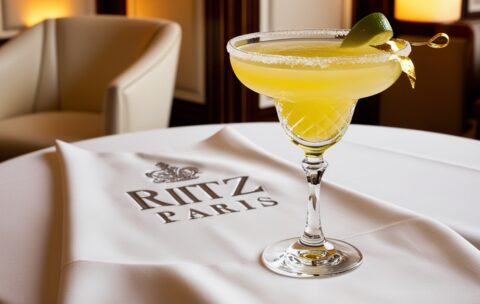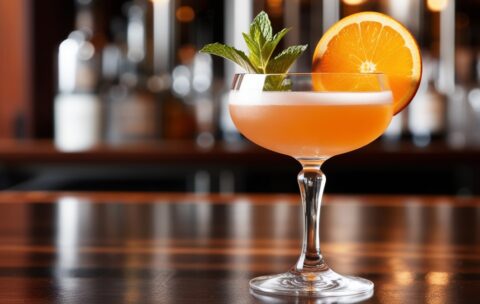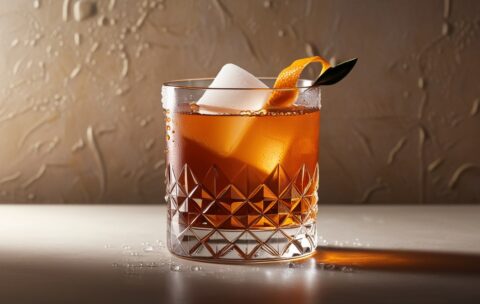Popular Topics
Gold Leaf
Cranberry Juice
Fine Dining
Vodka Drinks
Sparkling Wine
Cuban Cocktail
Tiki Cocktails
Bloody Mary
Mixology
Dry Vermouth
Brunch Drink
Bourbon
Cocktails
Bitters
Luxury Cocktails
Artisanal Ingredients
Mojito
Refreshing Cocktails
Caribbean Classics
Luxury
Celebration Drink
Simple Syrup
Frozen Cocktails
Margarita Recipe
Sour Cocktail
Cuban Classic
Rum Drinks
Edible Gold
Polynesian‐Style
Cocktail Recipe
1940s Classics
Classic Mixology
Hangover Cure
Heritage Recipe
Classic Drinks
Ginger Beer
Home Bartending
Classic Cocktails
Gentleman’s Choice
Daiquiri
Martini
Summer Refreshers
Cocktail
Amaro
Coffee Cocktail
Aged Rum
Bartending Techniques
Espresso Martini
Old Fashioned
Tomato Juice
Vodka Cocktail
Whiskey Cocktail
Signature Cocktail
Italian-Inspired
Muddled Sugar
Cosmopolitan
Upscale Drinks
Orange Liqueur
Blended Beverages
Mint Cocktail
Popular Instructors
All Drinks Courses
What you'll learn
The origin and evolution of the Daiquiri, from early 20th-century Cuba to modern bars.
How to select and measure white rum, lime juice, and simple syrup for optimal balance.
Proper shaking technique: ice selection, shaker fill level, and pour timing.
Glassware choice and presentation tips (e.g., chilled coupe vs. Nick & Nora glass).
Simple variations (e.g., adding fruit purée or flavored syrups) while preserving the classic profile.
What you'll learn
How to balance tomato juice, vodka, and spice for a perfectly seasoned cocktail.
Techniques for layering Worcestershire sauce, hot sauce, and horseradish to build depth of flavor.
Proper methods to rim a glass (celery salt, pepper, or spice blend) for added texture and taste.
Creative garnish arrangements—from classic celery stalks to pickles, olives, and bacon.
Ways to customize heat level and saltiness to suit different preferences.
Tips for preparing a large batch (pitcher or bar-style) without sacrificing freshness.
What you'll learn
How to select and measure high-quality vodka, cranberry juice, Triple Sec (or Cointreau), and fresh lime juice for optimal balance.
Proper shaking technique: ice selection, shaker fill level, and timing to achieve a silky-smooth texture and bright color.
Glassware choice and chilling methods (using a martini glass vs. a coupe).
Classic garnish options—lime wheel or twist—and how to express citrus oils for aroma.
Variations on the original recipe (e.g., swapping orange liqueurs or adjusting tartness).
Tips for batch-make a pitcher of Cosmopolitans without losing the vibrant hue and balanced taste.
What you'll learn
How to properly muddle mint and sugar to release essential oils without bruising the leaves.
The ideal ratio of white rum, fresh lime juice, and simple syrup for a perfectly balanced drink.
Techniques for layering ingredients and adding soda water to preserve carbonation.
Tips for selecting the freshest mint varieties and hand-rolling or tearing leaves.
Methods to crush ice at home for that classic “frosty” Mojito texture.
Variations on the traditional recipe, including flavored syrups or fruit additions.
What you'll learn
Historical Background: Discover how the Moscow Mule emerged in post–World War II America and its role in boosting vodka’s popularity.
Ingredient Selection: Learn why a quality vodka and spicy, carbonated ginger beer make a difference, and how fresh lime juice elevates the drink.
Proportions & Balance: Master the classic ratio of vodka to ginger beer to lime, ensuring the right interplay of heat, acidity, and spirit.
Mixing Technique: Practice stirring versus brief shaking to preserve carbonation, and understand why crushed ice versus cubes can alter texture.
Presentation & Serving: Explore the tradition of using a copper mug—how it impacts temperature, aroma, and visual appeal.
Garnishing & Variations: Experiment with garnish choices (lime wheel, mint sprig, candied ginger) and creative twists (fruit infusions, flavored vodkas).
Tasting & Pairing: Develop your palate to identify the balance between ginger spice and lime acidity, and which foods complement the Mule’s zing.
What you'll learn
How to properly muddle a sugar cube (or measure simple syrup) with bitters to create the foundation of an Old Fashioned.
Differences between using bourbon versus rye whiskey: flavor profiles, proof considerations, and regional traditions.
Techniques for selecting and expressing citrus peel to maximize aromatic oils without adding bitterness.
Best practices for choosing ice (large cubes or spheres) to control dilution and maintain temperature.
Stirring methods that achieve a silky texture and proper dilution—timing, tool grip, and motion.
Variations on the classic recipe, such as adding a barspoon of water, swapping citrus types, or using flavored bitters.
Espresso Martini
The Espresso Martini is a sophisticated coffee-forward cocktail that marries …
What you'll learn
Historical Background: Trace the origins of the Espresso Martini and understand its cultural impact in the mid-1980s London bar scene.
Ingredient Selection: Identify the ideal vodka and coffee liqueur varieties, plus quality indicators for fresh espresso beans.
Espresso Extraction: Master key variables—pressure, temperature, and timing—to pull a shot optimized for a cocktail.
Mixology Techniques: Learn dry-shaking and ice-shaking methods to achieve a rich, stable crema and a perfectly chilled drink.
Straining & Presentation: Discover how to double-strain for a crystal-clear pour, layer foam properly, and place garnishes without collapsing the crema.
Serving & Pairing: Explore glassware choices, serving temperatures, and ideal food pairings for various occasions.
- 1
- 2















